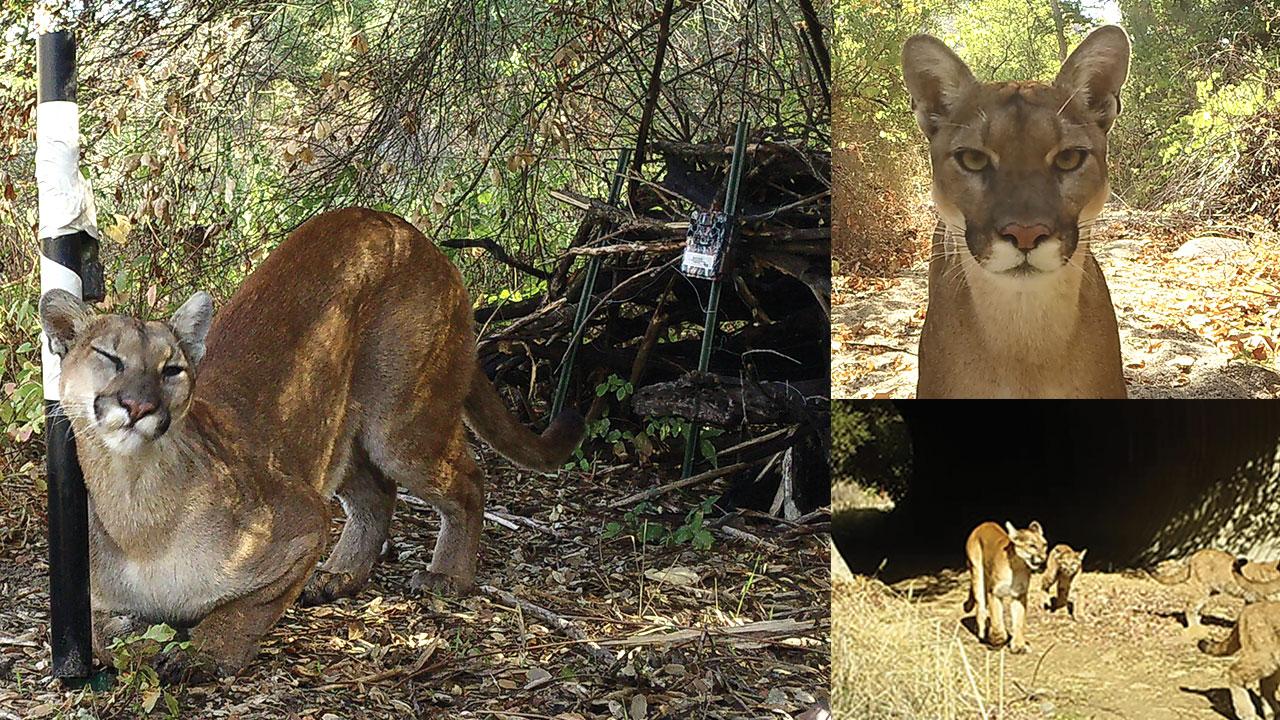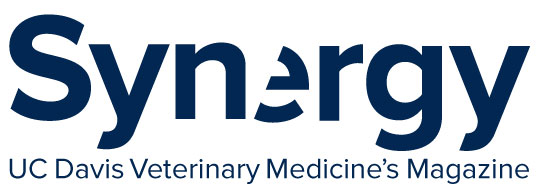
Discoveries

Dogs Inhale New Immunotherapy to Fight Lung Cancer
Cancers that afflict dogs—including sarcomas, brain tumors, lymphoma and melanoma—are incredibly similar to cancers that humans develop. Thanks to a clinical trial in companion dogs (including Josie, pictured), UC Davis cancer researchers for both companion dogs and humans see promise in a novel immunotherapy drug based on research published in the Journal for ImmunoTherapy of Cancer.
Canine oncologist Robert B. Rebhun with the School of Veterinary Medicine and surgical oncologist Robert J. Canter with UC Davis Comprehensive Cancer Center are corresponding authors for the study that investigated a novel approach that triggers the body’s defense mechanisms, its T-cells and natural killer cells, to respond and destroy cancer.
In the first-of-its-kind Phase 1 clinical trial, 21 pet dogs of various breeds that had metastatic lung disease resulting from osteosarcoma or melanoma were treated with protein interleukin-15 (IL-15)—a substance important to signaling and regulating functions in immune system activity.
Dogs in the study inhaled a mist containing IL-15 twice daily. Doses were increased over time, to
help determine not only effectiveness, but also tolerable levels and the ceilings above which toxicity would result. Dogs exhibited significant responses within 14 days after they began inhaling the IL-15 mist. Tumors shrank dramatically in two dogs in the study, including one that went into complete remission for more than a year. Cancer that had been growing rapidly in five other dogs stabilized for several months.
“The inhaled IL-15 responses that we’ve seen in dogs are better than prior human studies, but clinical benefit is seen in less than half of the dogs,” said Rebhun, who holds the Maxine Adler Endowed Chair in Oncology and is the associate director of the cancer program in the Center for Companion Animal Health. “Using IL-15 in people has led to potentially favorable immune responses but has
not yielded good tumor responses. This indicates that combining IL-15 with other immunotherapies may result in additive or synergistic responses.”

Pathogens Hitch a Ride on Plastics to the Sea
Microplastics are a pathway for pathogens on land to reach the ocean, with likely consequences for human and wildlife health, according to a UC Davis study published in the journal Scientific Reports. It is the first documented connection between these rice-grain-sized plastic particles in the ocean and land-based pathogens.
The pathogens studied—Toxoplasma gondii, Cryptosporidium (Crypto) and Giardia—can infect both humans and animals. They are recognized by the World Health Organization as underestimated causes of illness from shellfish consumption and are found throughout the ocean.
“It’s easy for people to dismiss plastic problems as something that doesn’t matter for them, like, ‘I’m not a turtle in the ocean; I won’t choke on this thing,’” said corresponding author Karen Shapiro, an infectious disease expert and associate professor in the school. “But microplastics can actually move germs around, and these germs end up in our water and our food.”
T. gondii, a parasite found only in cat feces, has infected many ocean species with the disease toxoplasmosis. UC Davis and its partners have a long history of research connecting the parasite to sea otter deaths. It’s also killed critically endangered wildlife, including Hector’s dolphins and Hawaiian monk seals. In people, toxoplasmosis can cause lifelong illnesses, as well as developmental and reproductive disorders.
Crypto and Giardia cause gastrointestinal disease and can be deadly in young children and people who are immunocompromised.
“This is very much a problem that affects both humans and animals,” said first author Emma Zhang, a 2022 DVM graduate. “It highlights the importance of a One Health approach that requires collaboration across human, wildlife and environmental disciplines.”

Hope for Southern California Mountain Lions at Risk
The plight of big cats who call this metropolitan region home was covered in a National Geographic feature after new research shows they are dangerously inbred due to habitat fragmentation—caused primarily by major roads and highways,
which restrict movement and gene flow. A study, published recently in the journal Theriogenology, found that nine of only several dozen cougars in the coastal mountains of Southern California have either very high levels of abnormal sperm or possess kinked tails, both signs of a serious lack of genetic diversity. Two cats also had testicular abnormalities, another manifestation of inbreeding.
Members of the school’s Karen C. Drayer Wildlife Health Center’s California Mountain Lion Project team participated in the study.
These experts say that for these lions to survive long-term, populations in the Santa Monica Mountains northwest of the city, and the Santa Ana Mountains to the southeast, need to move about more freely in order to increase their genetic diversity. A large new wildlife overpass will soon be constructed over Route 101 to allow the animals in the Santa Monica Mountains safe passage. The project’s ceremonial groundbreaking took place on April 22, 2022—Earth Day— and will open in 2025.
“Unfortunately, while the 101 wildlife overpass will benefit the Santa Monicas lion population, it won’t do anything for the Santa Anas population that we have been studying for 17 years,” said associate veterinarian Winston Vickers. “Our UC Davis project is specifically partnering with Caltrans and The Nature Conservancy on planning and engineering for an overpass or underpass across I-15 to benefit that population.”
He adds that they are also doing extensive work under new grants to enhance connectivity to the north through the Tehachapi Range, and in the north-central coast for lions from the Santa Cruz Mountains through the Gabilan Range and Pacheco Pass areas. Both the Tehachapi and north-central coast projects are in anticipation of the disruptions expected with extension of high- speed rail through those areas.
“We’re proud of our leadership role in the collaborative effort to conserve California’s mountain lion populations across multiple areas of the state,” Vickers said.
